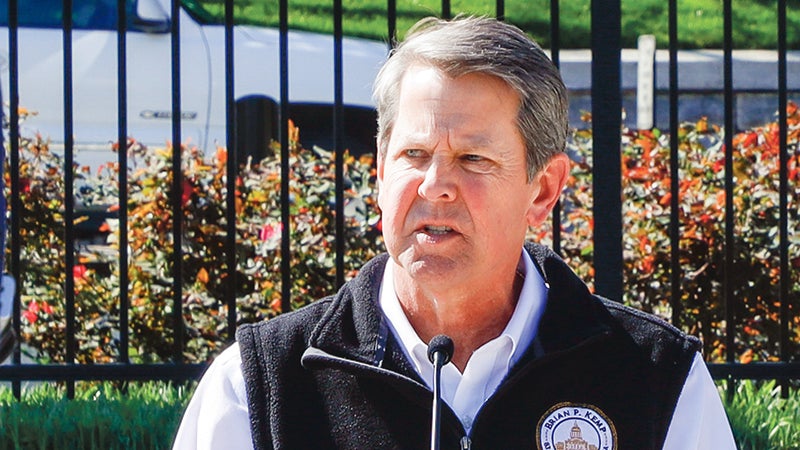Gov. Kemp announces statewide shelter in place order and school closures
Published 3:30 pm Thursday, April 2, 2020
|
Getting your Trinity Audio player ready...
|
Georgia Gov. Brian Kemp announced Wednesday he would sign an executive order Thursday implementing a statewide shelter in place order to go into effect on Friday and run through April 13.
Kemp said he and Georgia Department of Public Health Commissioner Dr. Kathleen Toomey would work through the night Wednesday to finalize and publish the details of the order Thursday.
“We are taking action to protect our hospitals and to help our medical providers and prepare for the patient surge that we know is coming,” Kemp said. “This action will ensure uniformity across jurisdictions for Georgians sheltering in place, and help families and businesses be able to comply with these provisions.”
Before announcing the order, Kemp said in the past 48 hours, the modeling and data tracking COVID-19 has “dramatically changed for Georgia.” The said the Center for Disease Control has announced individuals can be infected and begin to spread the coronavirus earlier than previously thought — even if they have no symptoms.
“From a public health standpoint, this is a revelation and a game-changer,” Kemp said.
Beyond ordering the shelter in place, Kemp also announced he planned on signing an executive order Wednesday to close all K-12 public schools for the rest of the year. The Troup County School System has been closed since March 13.
“I want to stress that online learning will continue,” Kemp said. “I want to thank all of the educators and superintendents that have stayed in touch with us through this process to make the best of a tough situation. We will continue to work with them on the path forward.”
Kemp called on doctors, nurses and all medical staff to continue to be strong and courageous throughout the outbreak of the illness.
“To our first responders, and everyone else on the ground fighting this fight from a medical perspective, truck drivers, grocery store workers, food delivery workers — be strong and courageous,” Kemp said. “Mothers, fathers, sisters and brothers, be strong and courageous.”
The governor said now is the time to fight COVID-19 as a state and be resilient.
“We are in this together,” he said. “We’re going to win this together.”
Toomey said she felt this was the appropriate time to take “very aggressive” community mitigation measures to address the spread of the virus. She said residents can’t be misled by the fact that there are relatively few cases in some areas.
“We have not been testing everybody,” she said. “We have been testing only those who have symptoms and those who are the most ill. We realize now that individuals may be spreading the virus, not even realizing they have the infection.
Toomey said as many as one in four people with COVID-19 don’t realize they have the virus because they show no symptoms. Additionally, she said as symptoms begin, people can transmit it earlier than expected.
“We felt that the time was now to take some more aggressive measures,” Toomey said.
She said every possible situation where people are in a congregate setting or gathered together could be potential sites for transmission.
“We really ask everyone to think about how we can work together with you and your community,” Toomey said. “To not only protect yourselves and your family but please take responsibility for your community as well because it will be your actions that protect the community as a whole.”
Kemp said the overall goal is to try and stop the spread of the virus, so the hospitals aren’t overwhelmed. He said according to the Institute for Health metrics and evaluation at the University of Washington, Georgia will reach peak hospital capacity on April 23.
“This model assumes that Georgians continue to abide by the state’s orders and new social distancing methods through the end of May,” he said.
Kemp said the goal is to keep as many people as possible from entering the hospital system, with the main target being the elderly and medically fragile. He said those are the ones that are going to be more susceptible to need a hospital bed, as well as treatment in the intensive care unit or need a ventilator.
“We’re trying to make sure we get that big target funneled down to an amount of people that we can handle with our existing hospital bed space,” Kemp said. “But also ramp up for the surge that’s coming with extra beds and reopening these old facilities.”






